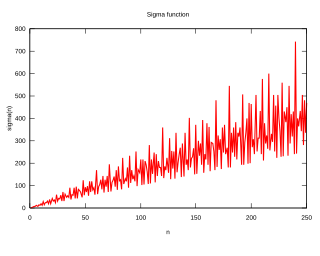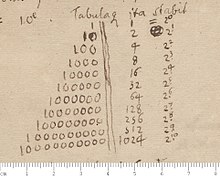The byte is a unit of digital information that most commonly consists of eight bits. Historically, the byte was the number of bits used to encode a single character of text in a computer and for this reason it is the smallest addressable unit of memory in many computer architectures. To disambiguate arbitrarily sized bytes from the common 8-bit definition, network protocol documents such as the Internet Protocol refer to an 8-bit byte as an octet. Those bits in an octet are usually counted with numbering from 0 to 7 or 7 to 0 depending on the bit endianness.
A binary prefix is a unit prefix that indicates a multiple of a unit of measurement by an integer power of two. The most commonly used binary prefixes are kibi (symbol Ki, meaning 210 = 1024), mebi (Mi, 220 = 1048576), and gibi (Gi, 230 = 1073741824). They are most often used in information technology as multipliers of bit and byte, when expressing the capacity of storage devices or the size of computer files.

The gigabyte is a multiple of the unit byte for digital information. The prefix giga means 109 in the International System of Units (SI). Therefore, one gigabyte is one billion bytes. The unit symbol for the gigabyte is GB.
The kilobyte is a multiple of the unit byte for digital information.
Kilo is a decimal unit prefix in the metric system denoting multiplication by one thousand (103). It is used in the International System of Units, where it has the symbol k, in lowercase.

In mathematics, the logarithm is the inverse function to exponentiation. That means that the logarithm of a number x to the base b is the exponent to which b must be raised to produce x. For example, since 1000 = 103, the logarithm base of 1000 is 3, or log10 (1000) = 3. The logarithm of x to base b is denoted as logb (x), or without parentheses, logb x. When the base is clear from the context or is irrelevant it is sometimes written log x.

The imaginary unit or unit imaginary number is a solution to the quadratic equation x2 + 1 = 0. Although there is no real number with this property, i can be used to extend the real numbers to what are called complex numbers, using addition and multiplication. A simple example of the use of i in a complex number is 2 + 3i.

In mathematics, exponentiation is an operation involving two numbers: the base and the exponent or power. Exponentiation is written as bn, where b is the base and n is the power; this is pronounced as "b (raised) to the n". When n is a positive integer, exponentiation corresponds to repeated multiplication of the base: that is, bn is the product of multiplying n bases:
10 (ten) is the even natural number following 9 and preceding 11. Ten is the base of the decimal numeral system, the most common system of denoting numbers in both spoken and written language.
The tables contain the prime factorization of the natural numbers from 1 to 1000.

A power of two is a number of the form 2n where n is an integer, that is, the result of exponentiation with number two as the base and integer n as the exponent.
An order of magnitude is usually a factor of ten. Thus, four orders of magnitude is a factor of 10,000 or 104.
A mathematical coincidence is said to occur when two expressions with no direct relationship show a near-equality which has no apparent theoretical explanation.

In number theory, a branch of mathematics, the Carmichael functionλ(n) of a positive integer n is the smallest member of the set of positive integers m having the property that
A unit prefix is a specifier or mnemonic that is prepended to units of measurement to indicate multiples or fractions of the units. Units of various sizes are commonly formed by the use of such prefixes. The prefixes of the metric system, such as kilo and milli, represent multiplication by positive or negative powers of ten. In information technology it is common to use binary prefixes, which are based on powers of two. Historically, many prefixes have been used or proposed by various sources, but only a narrow set has been recognised by standards organisations.

In number theory, a colossally abundant number is a natural number that, in a particular, rigorous sense, has many divisors. Particularly, it is defined by a ratio between the sum of an integer's divisors and that integer raised to a power higher than one. For any such exponent, whichever integer has the highest ratio is a colossally abundant number. It is a stronger restriction than that of a superabundant number, but not strictly stronger than that of an abundant number.
693 is the natural number following 692 and preceding 694.
This timeline of binary prefixes lists events in the history of the evolution, development, and use of units of measure that are germane to the definition of the binary prefixes by the International Electrotechnical Commission (IEC) in 1998, used primarily with units of information such as the bit and the byte.
An order of magnitude is generally a factor of ten. A quantity growing by four orders of magnitude implies it has grown by a factor of 10000 or 104. However, because computers are binary, orders of magnitude are sometimes given as powers of two.








